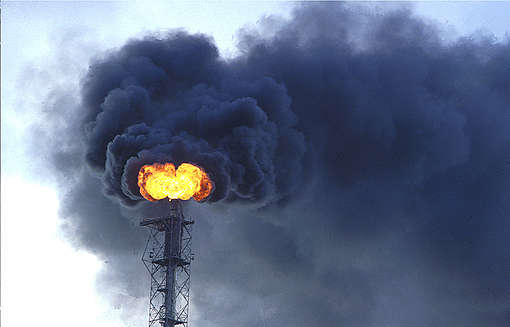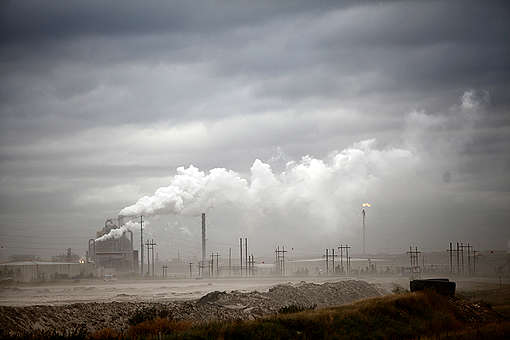Reducing emissions with carbon capture technology, often touted as a solution to mitigate climate change, has faced criticism as potentially ineffective and misleading. While proponents argue that capturing carbon dioxide (CO2) from industrial processes and storing it underground can reduce greenhouse gas emissions, critics contend that this approach perpetuates reliance on fossil fuels and distracts from more sustainable solutions such as renewable energy adoption and conservation efforts. Examining the efficacy, environmental impacts, and economic feasibility of carbon capture technology reveals complex challenges and ethical considerations that question its role in achieving meaningful climate action.
Technical and Practical Limitations
Carbon capture technology faces significant technical and practical limitations that undermine its effectiveness as a viable climate solution. Energy Intensive Processes: The capture, compression, and transportation of CO2 require substantial energy inputs, potentially offsetting any emissions reductions achieved. Limited Storage Capacity: Identifying and securing suitable geological formations for long-term CO2 storage poses challenges, including leakage risks and geological uncertainties. Operational Costs: High capital and operational costs associated with carbon capture facilities make them economically prohibitive without substantial government subsidies or carbon pricing mechanisms. These limitations underscore the difficulty of scaling carbon capture technology to a level that significantly impacts global emissions.

Fossil Fuel Dependency and Delayed Transition
Critics argue that investing in carbon capture technology perpetuates dependency on fossil fuels and delays the transition to renewable energy sources. Subsidizing Carbon Intensive Industries: Governments and corporations investing in carbon capture projects often prioritize sustaining fossil fuel industries over transitioning to cleaner, renewable energy alternatives. Risk of Lock-In: Continued reliance on carbon-intensive infrastructure and technologies can lead to long-term "carbon lock-in," hindering progress toward a low-carbon economy. Market Distortions: Subsidies for carbon capture projects may divert funds and attention away from renewable energy development and energy efficiency initiatives that offer more sustainable long-term benefits.
Environmental and Social Impacts
The environmental and social impacts of carbon capture technology raise ethical concerns and considerations. Environmental Footprint: Aside from operational emissions, carbon capture facilities can have significant environmental footprints, including land use impacts, water consumption, and potential ecological disruptions. Social Justice Concerns: Communities near carbon capture sites may face health risks from exposure to CO2 and other pollutants, exacerbating environmental justice issues. Resource Allocation: Investments in carbon capture technology divert resources away from community-based mitigation and adaptation efforts, potentially undermining local resilience and sustainability.
False Sense of Security and Delayed Policy Action
One of the most significant criticisms of carbon capture technology is its potential to create a false sense of security and delay urgently needed policy actions. Perpetuating Inaction: By promoting carbon capture as a panacea for climate change, policymakers may delay implementing more ambitious emissions reduction policies and regulations. Overstated Potential: Proponents of carbon capture often overstate its potential to achieve significant emissions reductions at scale, leading to unrealistic expectations and misplaced priorities. Political and Economic Interests: Industry lobbying and vested interests in maintaining the status quo can influence policy decisions that prioritize carbon capture over comprehensive climate solutions.
Alternatives and Sustainable Solutions
Instead of relying solely on carbon capture technology, critics advocate for investing in alternative and more sustainable solutions to mitigate climate change. Renewable Energy Expansion: Accelerating the deployment of solar, wind, hydroelectric, and other renewable energy sources can reduce reliance on fossil fuels and lower greenhouse gas emissions. Energy Efficiency: Improving energy efficiency in industries, transportation, and buildings offers immediate emissions reductions and cost savings without the technological and logistical challenges of carbon capture. Natural Climate Solutions: Protecting and restoring ecosystems such as forests, wetlands, and grasslands can sequester carbon naturally while providing biodiversity benefits and enhancing resilience to climate impacts.
Policy and Regulatory Frameworks
To effectively address climate change, critics emphasize the importance of implementing robust policy and regulatory frameworks that prioritize emissions reductions and sustainable development. Carbon Pricing: Establishing carbon pricing mechanisms, such as carbon taxes or cap-and-trade systems, incentivizes industries to reduce emissions and invest in cleaner technologies. Regulatory Standards: Setting stringent emissions standards and promoting technology-neutral policies encourage innovation and investment in renewable energy and energy efficiency solutions. Investment in Research and Development: Government funding for research and development of innovative technologies, including carbon capture advancements, can support sustainable solutions and enhance global climate resilience.
Public Perception and Engagement
Public perception and engagement play a crucial role in shaping the future of climate action, including attitudes toward carbon capture technology. Education and Awareness: Increasing public awareness about the complexities and trade-offs of carbon capture technology fosters informed decision-making and public support for effective climate policies. Community Involvement: Engaging communities affected by carbon capture projects in decision-making processes ensures transparency, equity, and accountability in climate mitigation efforts. Advocacy for Systemic Change: Grassroots movements and advocacy campaigns can mobilize public support for comprehensive climate solutions that prioritize environmental justice, equity, and long-term sustainability.
Ethical Considerations and Global Equity
Addressing climate change through carbon capture technology raises ethical considerations regarding global equity and environmental justice. Inter-Generational Equity: Decisions about carbon capture investments and policies today will impact future generations, underscoring the need for sustainable, long-term solutions. Global South Concerns: Developing countries often bear disproportionate impacts of climate change and may face ethical dilemmas regarding prioritizing carbon capture versus investing in immediate adaptation and resilience measures. Environmental Integrity: Balancing emissions reduction goals with protecting biodiversity, ecosystems, and natural resources requires ethical decision-making that considers the broader ecological and social implications.

Summary
While carbon capture technology offers potential benefits in reducing greenhouse gas emissions, its effectiveness, environmental impacts, and ethical considerations warrant critical examination. Critics argue that carbon capture may perpetuate fossil fuel dependency, delay the transition to renewable energy, and create false assurances of climate security. Alternatives such as renewable energy expansion, energy efficiency improvements, and natural climate solutions offer more sustainable pathways to mitigate climate change. Policymakers must prioritize comprehensive emissions reduction strategies, equitable climate policies, and public engagement to address the urgent challenges of climate change effectively. By integrating ethical considerations, global equity, and systemic change into climate action frameworks, society can move towards a sustainable and resilient future for all.